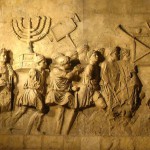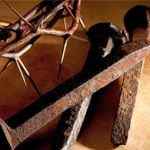Many Christians think that baptism originated with Yeshua’s (Jesus’) cousin Yochanan (John), who is known in the Bible as “John the Baptist.”
But baptism is a Biblical ritual that has been practiced regularly by all of Israel since the days of Moses.
The word baptism comes from the Greek word baptizó, which primarily means a thorough change of condition accomplished through immersion. It is written in Bibles to take the place of the Hebrew word tevilah (to totally immerse).
This ritual immersion in water is carried out in a mikvah, which is a Hebrew word meaning gathering of waters.
For the observant Jew, the mikvah personifies both the womb and the grave and consequently, rebirth. It is regarded as a pure, unadulterated avenue of connection with God; and for that reason, it is a place where hope is reawakened and strengthened.
The mikvah, therefore, plays an important role from preparation for marriage and Yom Kippur to the purification of menstruant women.
Tevilah (full-body immersion) marks a change of status from being tamay to tahor—ritually unclean (impure or unfit for the presence of God) to ritually clean. This is necessary because anytime a person is to come into the presence of God, they must come tahor (pure).
Entering a mikvah, therefore, is commanded in Scripture for a number of common life events.
For example, it was forbidden to come into the presence of God in the Temple without first passing through a mikvah (today, Chassidic men, or ultra-Orthodox Jews, enter the mikvah before Shabbat, and some even go every day of the week before morning prayers).
Scripture instructs that anyone who becomes ritually unclean through contact with a dead or diseased person needs to be immersed in water before re-entering the Temple.

Before entering the Temple, Jewish men immersed themselves in a mikvah, such as this one from the Second Temple period.
A mikvah was also to take place after a leper had been declared healed by the priest.
“The Lord said to Moses, ‘These are the regulations for the diseased person at the time of his ceremonial cleansing… He must wash his clothes and bathe himself with water and he will be clean.’” (Leviticus 14: 1–4, 7, 9)
As well, a woman who completes her menstrual cycle needs to be immersed before resuming sexual relations with her husband. (Leviticus 15:19–24)
This commandment is still observed today. The rabbis explain that this period of abstinence, called the niddah, teaches husbands and wives the need for discipline, respect, and moderation.
In the most traditional Jewish mikvah, a woman must thoroughly wash her entire body, even down to her finger and toenails before entering the mikvah.
Today one of the most widely practiced uses of the mikvah is in the pre-wedding preparation of the bride and groom. It’s a way of becoming ritually pure before the marriage.
There is no better way to enter a marriage than to start off being pure!
The bride is immersed as close to the wedding as possible, even on the
afternoon before the ceremony.
It’s customary for Chassidic men to go to the mikvah before their wedding as well, and today many observant Jews have also taken on this custom.

This illustration of a modern mikvah shows how naturally-produced water is mixed with city water, a requirement for the mikvah.
The Significance of a Mikvah
Obviously, the primary significance of the mikvah isn’t for physical cleansing, but to symbolize a spiritual cleansing.
The apostle Peter tells us that “the waters of immersion is not the removal of dirt from the body, but one’s pledge to keep a good conscience toward God, through the resurrection of Yeshua the Messiah.” (1 Peter 3:21)
The Prophet Ezekiel also speaks of gaining a spiritual renewal through cleansing waters:
“I will sprinkle clean water on you, and you will be clean; I will cleanse you from all your impurities and from all your idols.” (Ezekiel 36:25)
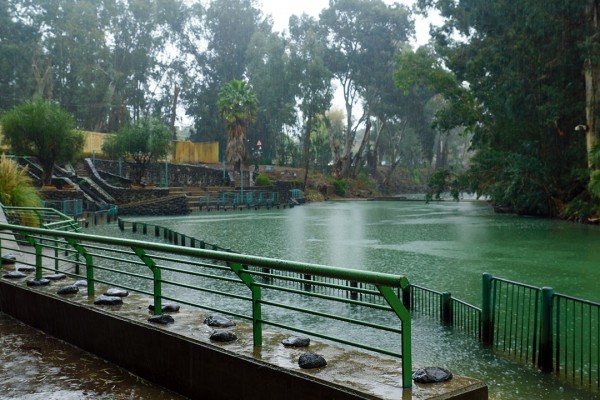
Yardenit (Little Jordan), a baptismal site on the Jordan River, may be near the place where Yochanan immersed Yeshua (Jesus).
Mikvot Uncovered in Israel
A mikvah was often a body of natural water such as a river, lake, spring, or any naturally fed gathering of water.
Over time, however, it became common to construct special pools.
Archaeological digs in Israel have revealed several of these man-made mikvot (plural) in the second temple compound, as well as in the Judean desert, built by the Qumran community (the Essenes).
Modern-day visitors to Jerusalem can see the remains of these ritual baths near the Southern Wall excavations. Immersion baths have also been uncovered at Masada, at the Herodian, and all over the Land of Israel.
Born Again—a Jewish Term
A man who wants to become Jewish must undergo the two main requirements: circumcision and immersion. A woman, however, must only be immersed.
When Gentile converts go down into the waters of the mikvah, they leave behind their pagan ways—symbolically dying to their old life—and come up out of the water as a newborn child with an entirely new identity. They are in essence reborn.
The Talmud (oral law) states, “When he comes up after his immersion, he is deemed an Israelite in all respects.” (Yevamot 47b)
Rabbi Yose says in the Talmud, “One who has become a proselyte is like a child newly born.” (Yevamot 48b)
So, we see that the term “born again” originated in Judaism.

Jesus and Nicodemus, by Crijn Hendricksz, 1616–1645. Yeshua told Nicodemus (a Jewish Pharisee) that to enter the Kingdom of God, one must be “born-again.”
Understanding that the term “born again” referred to a conversion to Judaism sheds light on the conversation between Yeshua (Jesus) and the sage Nicodemus in the Book of Yochanan (John).
Nicodemus wondered, “How can a man be born when he is old? He cannot enter a second time into his mother’s womb and be born, can he?” (John 3:4)
From his Jewish perspective, Nicodemus essentially asked, “How can I convert to Judaism if I am already a Jew?”
Yeshua answered, “A man must be born of water and spirit.” (John 3:5)
He was explaining to Nicodemus that we cannot rely on our “Jewishness” (or any other heritage) to enter the kingdom of heaven. A conversion of our spiritual condition is necessary for salvation.
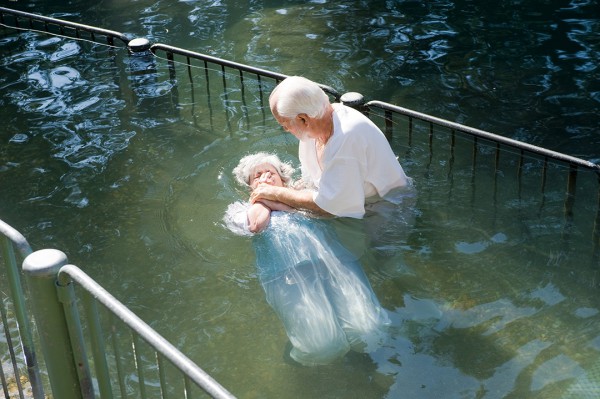
A Christian-style baptism at Yardenit. The Believer is totally immersed, back first, symbolizing a spiritual death and resurrection.
Judaism regards the mikvah as a symbolic expression of rebirth.
The mikvah represents the mother’s womb, which is called in Hebrew rechem. This comes from the same root as the Hebrew word for mercy (rahamah).
Immersing fully into the waters of the mikvah is like re-entering the womb, the place of mercy; of God’s creative power. Emerging from the mikvah is like being born again.
Immersion in a mikvah also represents death and resurrection. A person under water enters a death-like state, like a person descending into a grave. When he comes back out of the water, he comes back to life as a new creation.
When we are immersed into Yeshua Hamashiach (the Messiah), we also become a new creation: “Therefore, if anyone is in Messiah, he is a new creation; old things have passed away; behold, all things have become new.” (2 Corinthians 5:17)
Paul understood this death and rebirth imagery of the immersion and compared it to the death and resurrection of Yeshua:
“Don’t you know that all of us who were immersed into Messiah Yeshua were immersed into His death? We were therefore buried with Him through baptism [immersion] into death in order that, just as Messiah was raised from the dead through the glory of the Father, we too may live a new life.” (Romans 6:3-4)

A Philadelphia Anabaptist Immersion during a Storm (1812), by Pavel Svinyin. Anabaptism began as a 16th century offshoot of the Protestant reformation. They shared the belief with other reformers that baptism in Scripture requires someone to confess his or her faith in Yeshua and be fully immersed.
Yeshua, the Mikvah (Hope) of Israel
In Hebrew, the word mikvah has the same root letters as the word hope!
The great Prophet Jeremiah used the word mikvah in the sense of hope:
“O Hashem, the Hope [mikvah] of Israel, all who forsake you will be ashamed … because they have forsaken Hashem, the fountain of living water.” (Jeremiah 17:13)
When Believers are immersed in the waters of the mikvah, as a declaration of faith in Yeshua, they have the hope of a new life, a new beginning in Him.
“For I know the plans I have for you, says the Lord, plans to prosper you and not to harm you, plans to give you a hope [tikvah] and a future.” (Jeremiah 29:11)
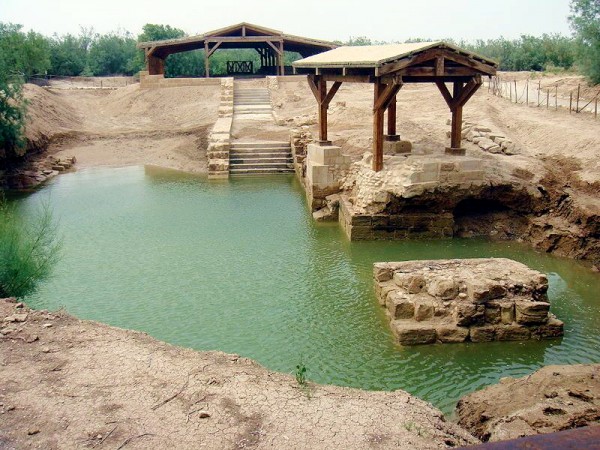
Some consider this ancient mikvah site in Betania at the Jordan River in Jordania as the place where Yeshua was immersed by Yochanan (John).
Immersion and Repentance
In the Brit Chadashah (New Testament), Yochanan (John) arrived in the desert and began proclaiming the message that Yeshua would also proclaim after His own immersion:
“Turn from your sins to God, for the Kingdom of Heaven is near! … confessing their sins, they were immersed by him in the Yarden [Jordan] River.” (Matthew 3:1–6)

The shofar sounds a wake-up call during the High Holy Days to mend our ways and turn back to God. May you experience great joy as you are cleansed and transformed by the power of His Holy Spirit through tevilah (immersion) in the mikvah.
His message of turn and repent is the message of Teshuvah!
Teshuvah is a familiar message during the High Holy Days of Rosh Hashanah (New Year) and Yom Kippur (Day of Atonement). During these Feasts of the Lord, Israel is to assess her spiritual condition and turn back to God.
The chronology in the Gospels reveals that Yochanan’s arrival took place in the fall, which is the time for these feasts.
The mikvah would have been a sign of inward cleansing in spiritual preparation for the Holy Days. Yeshua Himself entered the waters of mikvah at this time.
It is evident from Yeshua’s final instructions below that tevilah or mikvah would play a part in making all the Gentile nations into Talmidim (disciples) of the Jewish Messiah. He said,
“Go therefore and make disciples of all the nations, immersing them in the name of the Father and of the Son [Yeshua] and of Ruach HaKodesh [Holy Spirit].” (Matthew 28:19)











